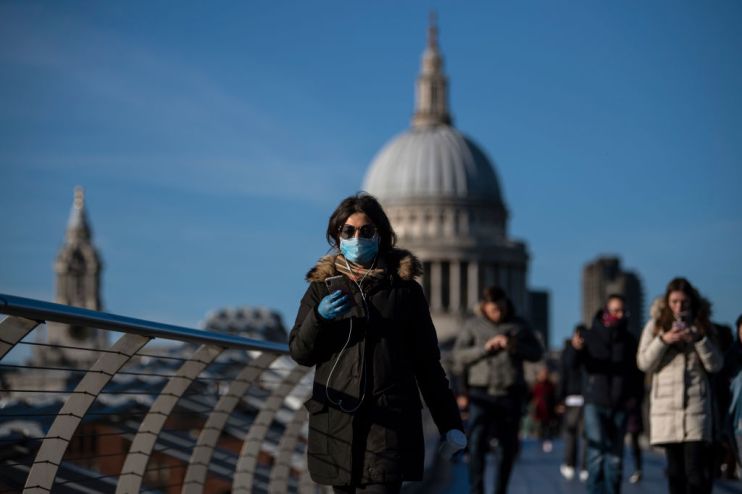Coronavirus cases rise across England amid second wave fears

Official figures released today by the Office for National Statistics (ONS) showed a “slight increase” in the number of new coronavirus cases across England for the first time since April, as the infection rate across the UK continues to rise.
ONS figures showed that there were around 4,200 new infections in the community per day in England between 20 July and 26 July.
“There is now evidence to suggest a slight increase in the number of people in England testing positive on a nose and throat swab in recent weeks,” the ONS said.
“There is not enough evidence to say with confidence whether Covid-19 infection rates differ by region in England, nor whether infection rates have increased in different regions over the past six weeks.”
However, the data estimated that the rate of infection in London now stands at around 1.3 — the highest in the country.
If the R value rises above 1 it means that every person who contracts coronavirus passes it on to at least one other person, meaning an escalation in cases. If the R number remains below 1, the virus is in retreat.
Estimated percentage of the population testing positive for the coronavirus across regions in England

The results came as part of the ONS’s Infection Survey Pilot, which showed a statistically significant rise in new cases for the first time since records began in April.
The UK saw its highest daily total of Covid-19 cases for more than a month yesterday. A total of 846 new cases were reported — the most since 901 cases were announced on 28 June.
The UK has now reported more than 302,000 confirmed cases of coronavirus and 45,999 fatalities. England has seen the bulk of Covid-related casualties, recording 41,082 deaths since the pandemic hit.
Fresh lockdowns
It comes as the government last night introduced fresh lockdown restrictions in virus hotspots in the north of England following a sharp spike in infections.
People in Greater Manchester, East Lancashire and parts of West Yorkshire were last night banned from meeting other households indoors, in a move described by health secretary Matt Hancock as “absolutely necessary”.
Hancock said the measures will be reviewed on a weekly basis.
Earlier in the day, the UK’s four chief medical officers increased the self-isolation period from seven days to 10 days in England, citing the “real possibility” people may continue to be infectious with coronavirus for longer than seven days.
In a statement, the medical officers said patients with Covid-19 “have a low but real possibility of infectiousness between seven and nine days after illness onset.”
Second wave fears
It comes as the health secretary yesterday said he was “worried” about a second wave of coronavirus “rolling across Europe”.
He said the government will “do everything to prevent it reaching these shores”, warning that it may reintroduce quarantine measures if the virus continues to spread.
Earlier this week, Boris Johnson said “clearly we now face the threat of a second wave in other parts of Europe.”
He added: “We must remain vigilant and continue to follow the official guidance to keep the virus under control and prevent any second wave.”
Before the Open: Get the jump on the markets with our early morning newsletter